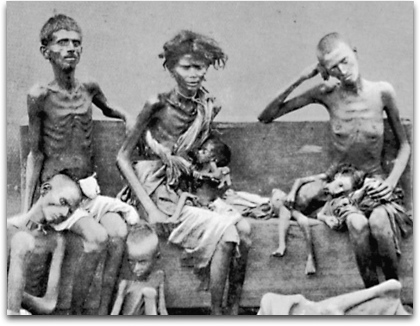
November 13, 2012
China’s Great Shame
By YANG JISHENG
BEIJING
THIRTY-SIX million people in China, including my uncle, who raised me like a father,
starved to death between 1958 and 1962, during the man-made calamity known as the Great
Famine. In thousands of cases, desperately hungry people resorted to cannibalism.
The toll was more than twice the number of fallen in World War I, and about six times the
number of Ukrainians starved by Stalin in 1932-33 or the number of Jews murdered by
Hitler during World War II.
After 50 years, the famine still cannot be freely discussed in the place where it happened. My
book “Tombstone” could be published only in Hong Kong, Japan and the West. It remains
banned in mainland China, where historical amnesia looms large and government control of
information and expression has tightened during the Communist Party’s 18th National
Congress, which began last week and will conclude with a once-in-a-decade leadership
transition.
Those who deny that the famine happened, as an executive at the state-run newspaper
People’s Daily recently did, enjoy freedom of speech, despite their fatuous claims about
“three years of natural disasters.” But no plague, flood or earthquake ever wrought such
horror during those years. One might wonder why the Chinese government won’t allow the
true tale to be told, since Mao’s economic policies were abandoned in the late 1970s in favor
of liberalization, and food has been plentiful ever since.
The reason is political: a full exposure of the Great Famine could undermine the legitimacy
of a ruling party that clings to the political legacy of Mao, even though that legacy, a
totalitarian Communist system, was the root cause of the famine. As the economist Amartya
Sen has observed, no major famine has ever occurred in a democracy.
In Mao’s China, the coercive power of the state penetrated every corner of national life. The
rural population was brought under control by a thorough collectivization of agriculture. The
state could then manage grain production, requisitioning and distributing it by decree.
Those who tilled the earth were locked in place by a nationwide system of household
registration, and food coupons issued to city dwellers supplanted the market. The peasants
survived at the pleasure of the state.
The Great Leap Forward that Mao began in 1958 set ambitious goals without the means to
meet them. A vicious cycle ensued; exaggerated production reports from below emboldened
the higher-ups to set even loftier targets. Newspaper headlines boasted of rice farms yielding
800,000 pounds per acre. When the reported abundance could not actually be delivered, the
government accused peasants of hoarding grain. House-to-house searches followed, and any
resistance was put down with violence.
Meanwhile, since the Great Leap Forward mandated rapid industrialization, even peasants’
cooking implements were melted down in the hope of making steel in backyard furnaces,
and families were forced into large communal kitchens. They were told that they could eat
their fill. But when food ran short, no aid came from the state. Local party cadres held the
rice ladles, a power they often abused, saving themselves and their families at the expense of
others. Famished peasants had nowhere to turn.
In the first half of 1959, the suffering was so great that the central government permitted
remedial measures, like allowing peasant families to till small private plots of land for
themselves part time. Had these accommodations persisted, they might have lessened the
famine’s impact. But when Peng Dehuai, then China’s defense minister, wrote Mao a candid
letter to say that things weren’t working, Mao felt that both his ideological stance and his
personal power were being challenged. He purged Peng and started a campaign to root out
“rightist deviation.” Remedial measures like the private plots were rolled back, and millions
of officials were disciplined for failing to toe the radical line.
The result was starvation on an epic scale. By the end of 1960, China’s total population was
10 million less than in the previous year. Astonishingly, many state granaries held ample
grain that was mostly reserved for hard currency-earning exports or donated as foreign aid;
these granaries remained locked to the hungry peasants. “Our masses are so good,” one
party official said at the time. “They would rather die by the roadside than break into the
granary.”
As a journalist and a scholar of contemporary history, I felt a duty to find out how the Great
Famine happened and why. Starting in the 1990s, I visited more than a dozen provinces,
interviewed over a hundred witnesses, and collected thousands of documents. Since the
Great Famine was a forbidden topic, I could get access to archives only under the pretext of
“researching agricultural policies” or “studying the food issue.”
Communist leaders established a vast system of slavery in the name of liberating mankind. It was promoted as the “road to paradise,” but in fact it was a road to perdition.
I intended my book to be a memorial to the 36 million victims, but also a literal tombstone,
anticipating the ultimate demise of the totalitarian political system that caused the Great
Famine. I was mindful of the risks in this endeavor: if something happens to me because I
tried to preserve a truthful memory, then let the book stand as my tombstone, too.
Yang Jisheng, deputy editor of the historical journal Yanhuang Chunqiu and a former editor at
the Xinhua News Agency, is the author of “Tombstone: The Great Chinese Famine, 1958-1962.”
This essay was translated by Guo Jian from the Chinese.
http://www.nytimes.com/2012/11/14/opinion/chinas-great-shame.html?pagewanted=print 11/14/2012
No comments:
Post a Comment